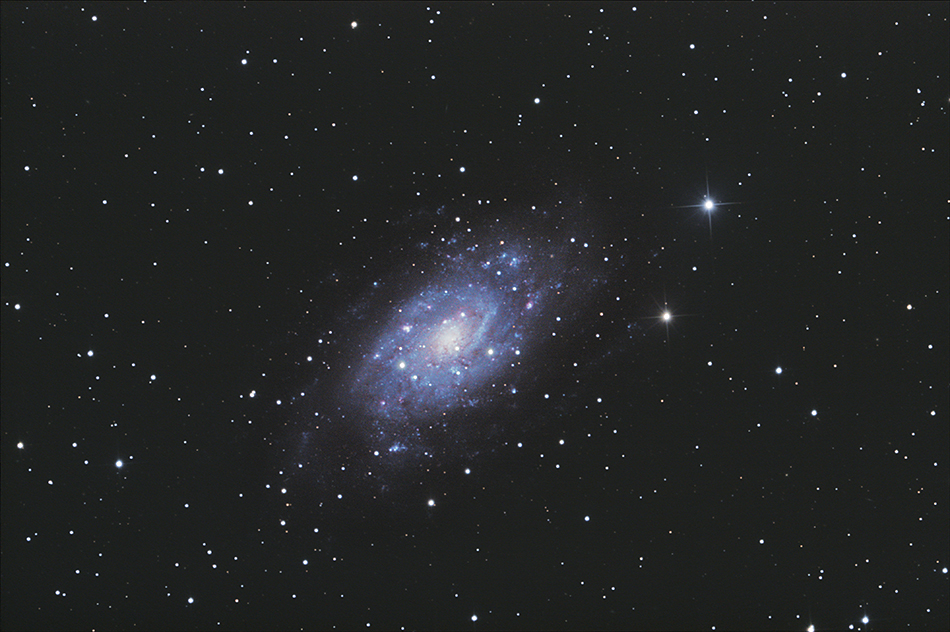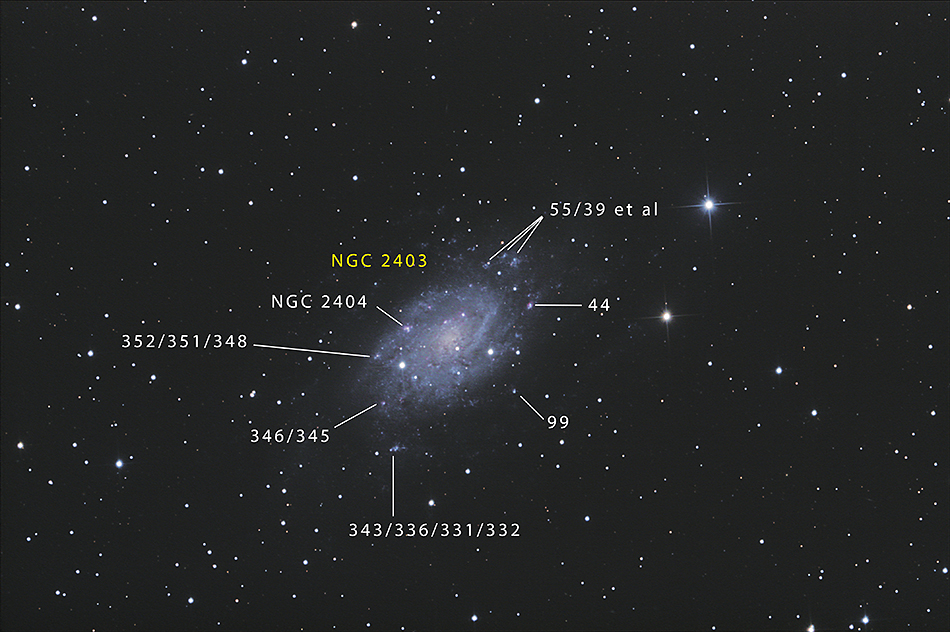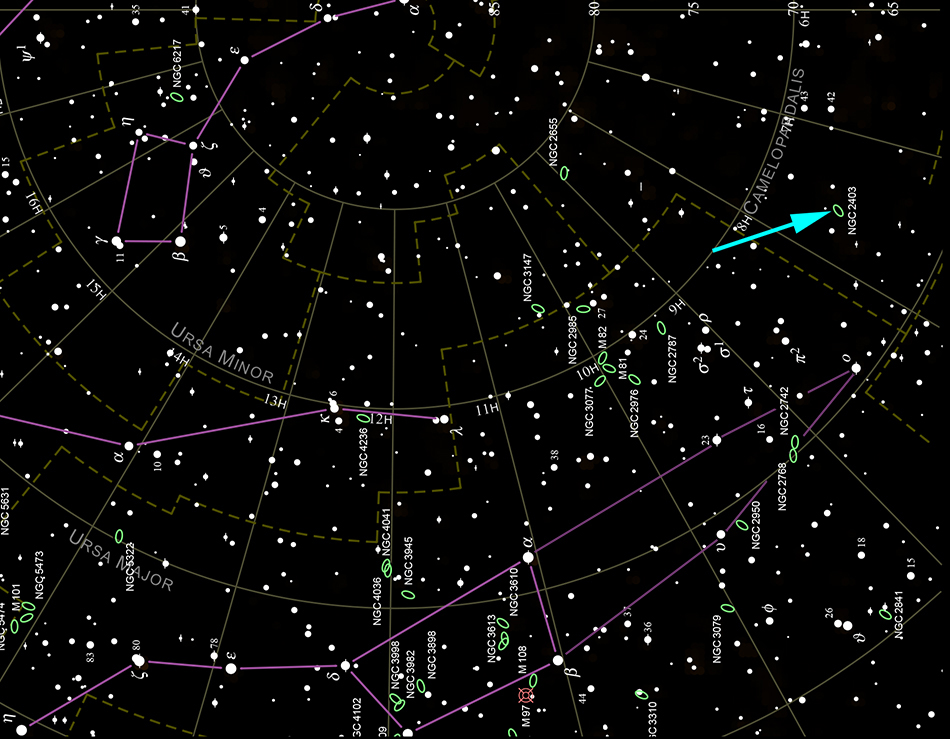

| Object name: | Constellation: | Coordinates: | Apparent size: | Visual brightness: |
|---|---|---|---|---|
| NGC 2403 | Camelopardalis | 07h37m / +65°36' | 23.4' x 11.8' | 8.2 mag |
The intermediate spiral galaxy NGC 2403 (also known as Caldwell 7) in the constellation Camelopardalis. NGC 2403 is a transitional type between the "spiral galaxies" and the "barred spiral galaxies" and contains numerous star-forming H II regions, one of the largest known H II regions being NGC 2404 in the northern spiral arm. The galaxy NGC 2403 is an outlying member of the M81 galaxy group and is approximately 8-10 million light-years from Earth. It is about 50,000-70,000 light-years in diameter and bears similarity to Messier 33. NGC 2403 was discovered by William Herschel in 1788 (source: Wikipedia).
Forty-one 3-minute exposures (122 minutes total exposure) at ISO 800 taken on December 18 / 19, 2020 were added for this shot with the DeepSkyStacker software and the final image processing was done in Photoshop.
Equipment: Canon EOS 450D Baader modified camera, TeleVue Paracorr Type II coma corrector, 16" f/4.5 "Ninja" dobsonian telescope riding on a dual-axis Tom Osypowski equatorial platform, Lacerta MGEN autoguider, Lacerta off axis system (field of view comparison: image of the moon with the same equipment).

